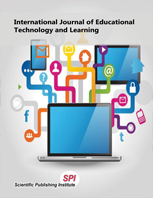A Case Study on How Children Develop Computational Thinking Collaboratively with Robotics Toys
DOI:
https://doi.org/10.20448/2003.91.39.51Keywords:
Computational, Thinking, Robotics, Collaborative, Preschool.Abstract
This article reports on a case study on how robotics toys provide the affordances for developing computational thinking (henceforth abbreviated to CT) in young learners. The three key constructs of CT -abstraction, algorithms and automation - are used in the research. The study results identify how children interact with robotics toys collaboratively and acquire CT skills. Problems were presented to the children through planned non-routine and immersive collaborative group activities. The Situations in which they externalised their inquiries and internalised new knowledge were observed. A detailed examination of the data collected was made to determine which robotics toys mediated the children’s acquisition while seamlessly switching between individual and collaborative activities and has led to the development of a framework of the stages in CT learning designs. This paper synthesises the relevant classroom activity designs in addressing CT as a general term that involves solving problems, entails a whole set of mental tools that enable people to reduce complex problems into readily solvable subtasks and composes algorithms that are executable by machines. Moreover, the article will also include details and analyses of the selection of commercially available technologies for developing CT in the young learners in the study.


